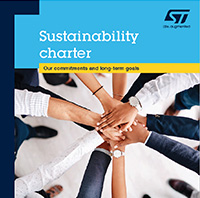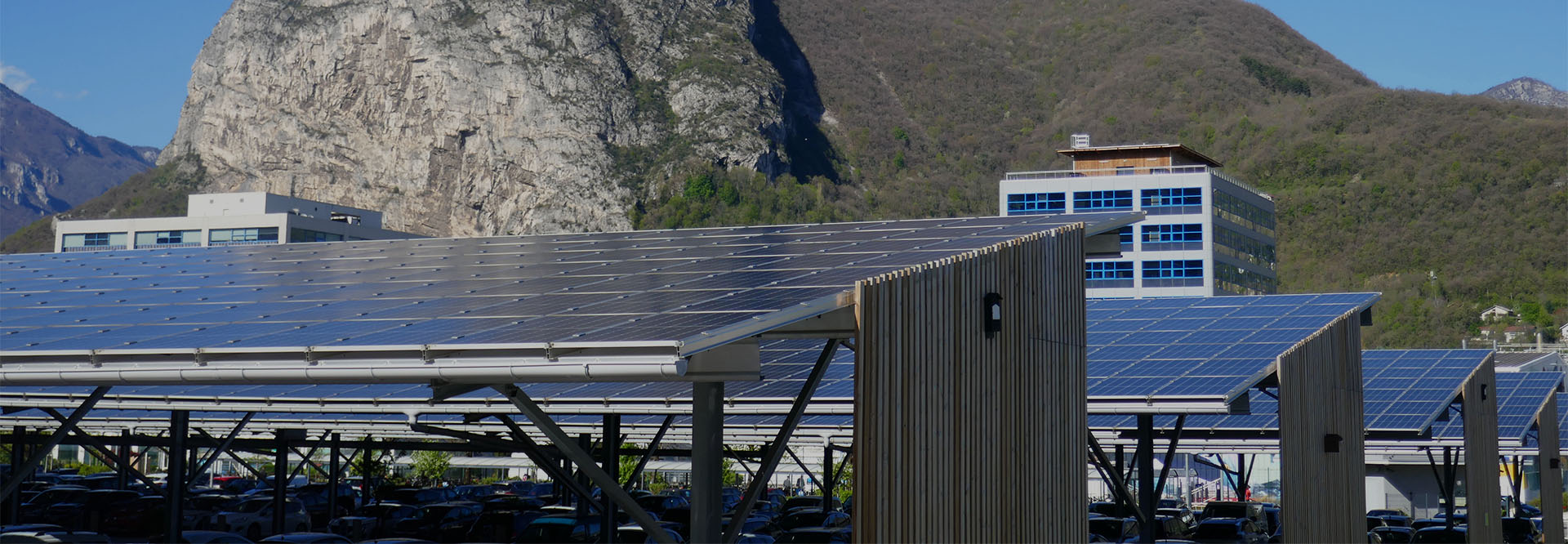Our approach to the environment
We are committed to managing our business operations in an environmentally responsible way.
1993
first environmental policy
ISO
14001
certification
at 19 sites
0.73
eco-footprint score
in 2023
At ST, we provide semiconductor solutions that play an important role in helping to solve environmental and social challenges. At the same time, our operations require natural resources and can have a negative impact on the environment if not managed properly. For 30 years, protecting the planet has been a priority. We have worked consistently to minimize our overall environmental footprint and are committed to reaching carbon neutrality by 2027.
Driving environmental efficiency
Policy and governance
We always strive to conduct our business in a responsible manner. In 1993, we established our first global environmental policy (see www.st.com). Our sustainability charter (www.st.com/sustainabilitycharter) supports this policy by outlining our commitments and goals for 2025 and 2027.

Our approach to the environment is incorporated into our Company strategy and is led by our executive management team. The corporate environmental team is responsible for developing programs and procedures that enable us to work towards our environmental objectives. These are implemented by local sustainability committees, each of which develops a roadmap according to the needs of their respective sites.
Our manufacturing sites each have an Environment, Health and Safety (EHS) steering committee responsible for implementing the environmental policy. The steering committee includes representatives from facilities, production, human resources, and production support. It meets quarterly to review relevant topics, such as environmental performance or compliance with local and national environmental standards and requirements. The outcomes of these reviews are shared with site management and appropriate actions are implemented where necessary.

Pascal Roquet
Environment and Health Director, Corporate Sustainability
At ST, we continue to make good progress towards our environmental goals. However, we recognize that the challenges faced by the semiconductor industry are best addressed through collaboration. I’m a member of various industry organizations that facilitate the exchange of knowledge and best practices among experts globally. This broad perspective benefits ST, and shapes strategic decisions in the wider industry, helping us all move towards our environmental objectives.
Managing our performance
ST’s environmental management system is aligned with international standards, including ISO14001, ISO50001, ISO14064, and EMAS(1). Our performance and management systems are evaluated annually through third-party surveillance audits, and our certifications are renewed every three years. Our major manufacturing sites are all certified (see ISO certificates available at www.st.com).
As part of our culture of continuous improvement, we conduct internal audits every three years. In 2023, we conducted internal audits at nine sites.
We also operate a program of third-party EHS legal compliance audits at 41 sites every three years. These assess the sites’ compliance status and limit risks related to our license to operate. The program covers all our manufacturing sites, all sites with more than 100 employees, and some smaller sites and warehouses.
Monitoring progress
We benchmark our progress in environmental performance against multiple indicators, including resource consumption, waste, and air emissions.
All our environmental data is collected centrally and reported regularly (monthly, quarterly, and yearly) on our environmental database. Tracking the progress of each indicator enables sites to continually adjust and improve their performance. The results and insights we gather are shared with all teams during quarterly environment steering committee meetings.
Since 2001, we have used our ‘eco-footprint radar’ tool to analyze data on the inputs and outputs of our manufacturing operations. The smaller the eco-footprint, the better the performance, with a score of 1.0 or below considered good. It allows us to compare the environmental impact of each manufacturing site, as well as our overall progress. We analyze the results to identify potential improvements and define the priorities we need to address. In 2023, our eco-footprint score was 0.73, better than our target of 0.75. 3-3
FOCUS

Use of sustainable raw materials
Semiconductor companies use various raw materials, including silicon, copper, aluminum, and rare earth elements, to manufacture high-tech products. These materials are essential for the performance of electronic devices. However, their availability is at risk due to resource scarcity, environmental impacts associated with mining, as well as geopolitical and economic challenges. To reduce reliance on certain materials and promote sustainable sourcing practices, they can sometimes be replaced with alternative, more sustainable raw materials. These are secondary raw materials, which are obtained through the recycling process.
ST recognizes the benefits of replacing critical and virgin raw materials with sustainable alternatives. To achieve this, we adopt a holistic circular economy approach to encourage innovation. Our Marcianise site (Italy) implemented an innovative process to use alternative materials in certain less complex products, such as smart cards. The ‘eco-friendly cards’ project uses recycled polyvinyl chloride (PVC), from PVC waste that would otherwise have to be disposed of. It also uses high density polyethylene reclaimed from oceans or beach environments.
In 2023, we established a workstream dedicated to responsible solutions, including circularity, within our ‘accelerating sustainability together’ program. We are currently building a roadmap to accelerate circularity and the use of sustainable raw materials in our products.
(1) EMAS: Eco-Management and Audit Scheme.


